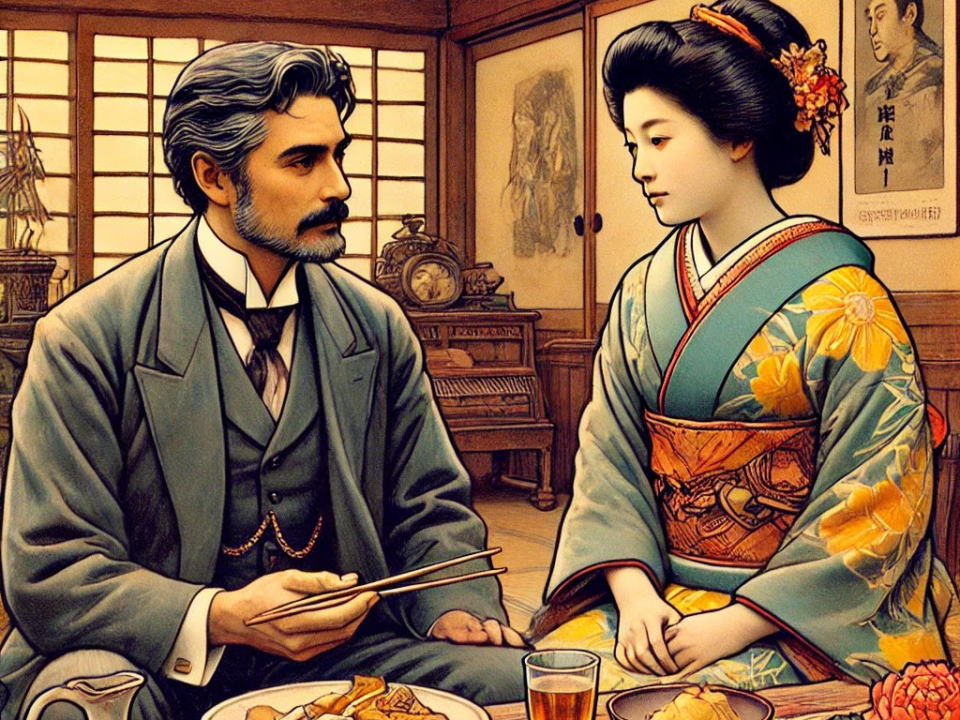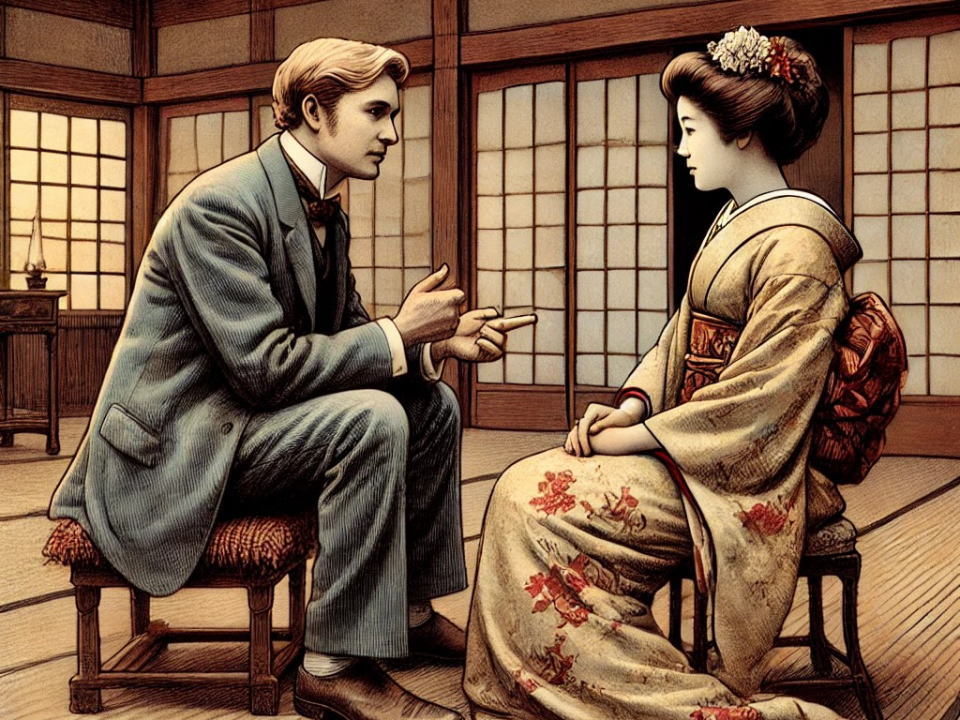
The Realities of an Intercultural Marriage
The marriage between Lafcadio Hearn (Koizumi Yakumo) and Setsu Koizumi was a rare occurrence in late 19th-century Japan.
At the time, marriages between Japanese and Westerners were almost unheard of, and bridging cultural differences was no easy task.
However, the two built their life together with mutual respect and understanding.
Differences in Values Between Japanese and Western Cultures in the Meiji Era
1. Differences in Household Roles
During the Meiji era, Japanese women were expected to manage the home and family as their primary role.
Meanwhile, in the West, the movement for women's social advancement had already begun, and the idea of gender equality was gradually spreading.
Setsu embodied traditional Japanese values, yet Hearn treated her as an equal partner.
This approach was highly unusual in Japanese society at the time.
2. Language and Communication Barriers
Hearn learned Japanese while living in Japan, but Setsu did not speak English, making communication difficult in the beginning.
However, through daily conversations, they gradually overcame the language barrier and deepened their understanding of each other’s culture.
Notably, Setsu introduced Hearn to Japanese traditions and folklore, which heavily influenced his literary works.
3. Differences in Food Culture
Japanese and Western food cultures are vastly different.
Initially, Hearn was not accustomed to Japanese cuisine, but over time, he developed a fondness for it.
He particularly enjoyed rice and miso soup and gradually adapted to a diet centered on fish and vegetables.
4. Differences in Religious Views
Hearn was raised in the Greek Orthodox tradition but distanced himself from Western religion as he grew older.
Conversely, he developed a keen interest in Shinto and Buddhism, deeply studying Japan’s unique spiritual culture.
Setsu introduced him to Japanese religious customs and traditional ceremonies, significantly shaping his worldview.
How Did They Overcome Their Cultural Differences?

1. Mutual Respect
Hearn maintained a sincere desire to understand Japanese culture.
He respected Setsu as his teacher in Japanese traditions and ultimately embraced a Japanese way of life.
Likewise, Setsu did not reject Hearn’s Western perspectives but made an effort to understand them.
2. Embracing Japanese Traditions
Hearn willingly adopted Japanese customs and values.
For instance, he enjoyed living in a traditional Japanese house, felt comfortable with tatami flooring, and did not hesitate to wear a kimono.
3. A Relationship Built on Learning from Each Other
Hearn and Setsu were not just husband and wife; they were lifelong learners of each other’s cultures.
Hearn absorbed Japanese culture through Setsu and shared it with the world through his writings.
Conversely, Setsu gained exposure to Western values through her life with Hearn.
Conclusion
The marriage between Lafcadio Hearn and Setsu Koizumi was built on mutual respect and the willingness to overcome cultural differences.
Their relationship was not just a simple intercultural marriage but also a symbol of cultural exchange between Japan and the West.
Hearn’s ability to introduce Japanese culture to the world was largely thanks to Setsu’s support, and their bond remains a celebrated part of history.
References
https://www.hearn-museum-matsue.jp/ (The Lafcadio Hearn Memorial Museum)
https://www.kankou-matsue.jp/ (Matsue City Tourism Official Website)
https://www.jnto.go.jp/ (Japan Government Tourism Bureau)
